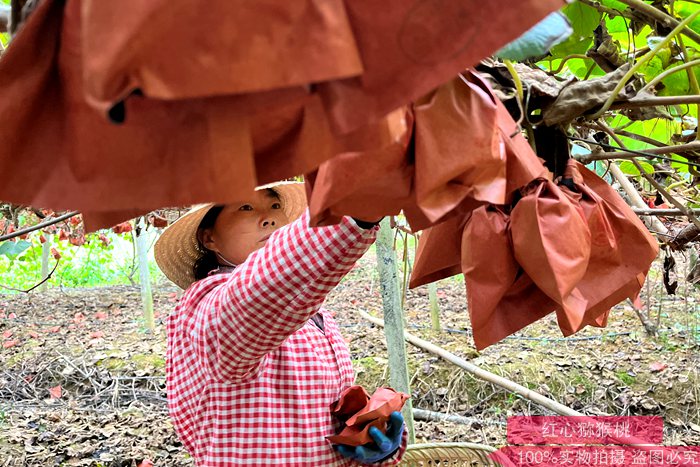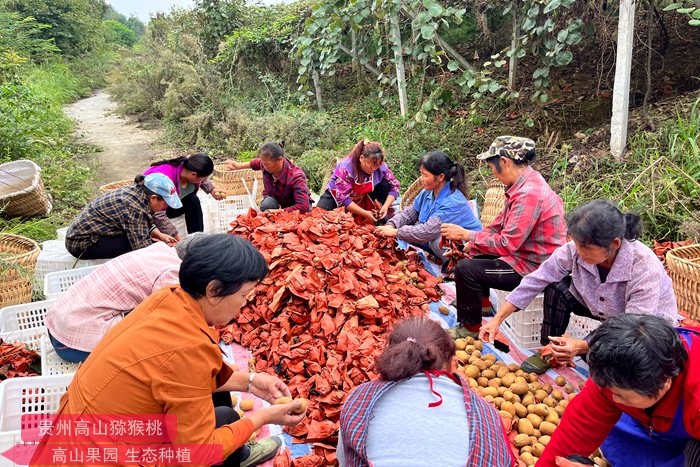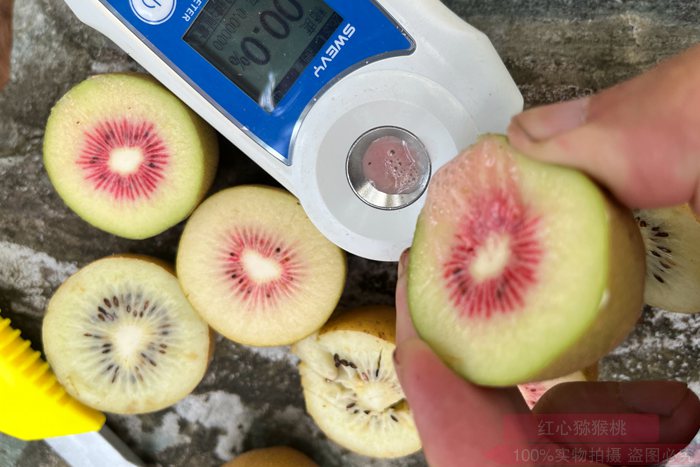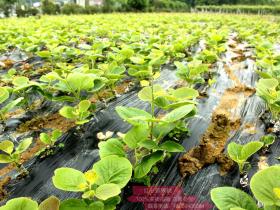Is there another way of doing this?还有别的办法吗?

▲Kiwifruit with yellow heart
As the G3 sungold kiwifruit packing for 2022 comes to a close, there is one area of packing this year that has challenged us more than any other year. That is the amount of explosive fruit we are dealing with at the bin tip. An explosive fruit typically occurs when a fruit stalk withers and then dies, resulting in a lack of nutrient flow to the fruit. This may happen weeks before harvest and the effect is that the fruit ripens and softens but remains in the canopy.

▲Fresh Golden Kiwi Fruit
随着2022年G3阳光金果猕猴桃包装即将结束,今年有一个包装领域对我们的挑战比其他任何一年都要大。这就是我们在垃圾箱顶部处理的爆炸性水果的数量。爆炸性果实通常发生在果梗枯萎然后死亡,导致缺乏养分流向果实时。这可能发生在收获前几周,结果是水果成熟并软化,但仍留在树冠中。

▲golden kiwi
Invariably these fruit make their way into a bin. The challenge comes as we tip the bin, and the fruit squashes and explodes contaminating neighbouring fruit with its juice. We then need to stop production to remove what is left of this fruit and the other fruit that has been contaminated with juice. This can be anything from half a tray, to over a tray of fruit. Once the level increases per bin, the trays per bin are compromised. Any remaining juice that we have not been able to remove, goes on to grow Alternaria on that fruit. This presents as a black growth on the surface of the fruit, and if there is an excess of Alterarnia it will need to be removed at coolstore checking time. At over 0.5/bin we start to feel the effect in the productive capacity of the packline. However, as we pack G3 out of the buffer store we are noticing that the explosive fruit are causing far less damage. It appears that holding the fruit at a lower temperature for an extended period of time is resulting in the fruit holding together as it comes out of a bin. We need to explore how we best use the buffer stores to our advantage in this area.

▲redkiwifruit Orchard picking
这些水果总是被扔进箱子。挑战就在我们把垃圾箱翻过来的时候,水果压扁并爆炸,用它的果汁污染邻近的水果。然后,我们需要停止生产,以清除这种水果和其他被果汁污染的水果的残留物。这可以是任何东西,从半个托盘到一个水果托盘。一旦每个箱子的料位增加,每个箱子的托盘就会受损。任何我们无法去除的剩余汁液都会继续在水果上种植链格孢菌。这表现为水果表面的黑色生长,如果有过多的Alterarnia,则需要在冷藏库检查时清除。超过0.5桶时,我们开始感受到包装线生产能力的影响。然而,当我们将G3猕猴桃从缓冲仓库中取出时,我们注意到爆炸性水果造成的损害要小得多。看起来,在较低温度下长时间保存水果会导致水果从箱子里出来时粘在一起。我们需要探索如何最好地利用缓冲存储来实现这一领域的优势。

▲redkiwifruit
Despite all of the above, I always find the first challenge, is understanding what is causing the problem. I have spent time with the technical team here at Trevelyan’s looking at very challenging sites versus very good sites. There appears that there are a number of causes of explosive fruit, but research seems to indicate that vines with less stress from PSA, produce less explosive fruit. Hence the need to keep up on PSA protectant sprays especially post-harvest.

▲东红猕猴桃丰产果园
尽管如此,我总是发现第一个挑战是了解问题的根源。我在Trevelyan的技术团队中花了很多时间来寻找极具挑战性的网站,而不是非常好的网站。似乎有很多原因导致果实爆炸,但研究似乎表明,葡萄藤受PSA压力较小,产生的果实爆炸性较小。因此,需要继续喷洒猕猴桃溃疡病保护剂,尤其是在收获后。

(猕猴桃雄株)
I also find if we all do a little bit, life becomes easier. If we apply PSA protectant sprays and make sure someone is leaning over the bins at picking time pulling out the soft, ripe fruit, then we are prepared in the packhouse and we can pull out those few that have got through.

▲红心猕猴桃成熟度检测
我还发现,如果我们都做一点,生活就会变得更容易。如果我们使用PSA保护剂喷雾,并确保有人在采摘时俯身在箱子上取出柔软、成熟的水果,那么我们就在包装室准备好了,我们可以取出那些已经通过的水果。

(猕猴桃花粉)









